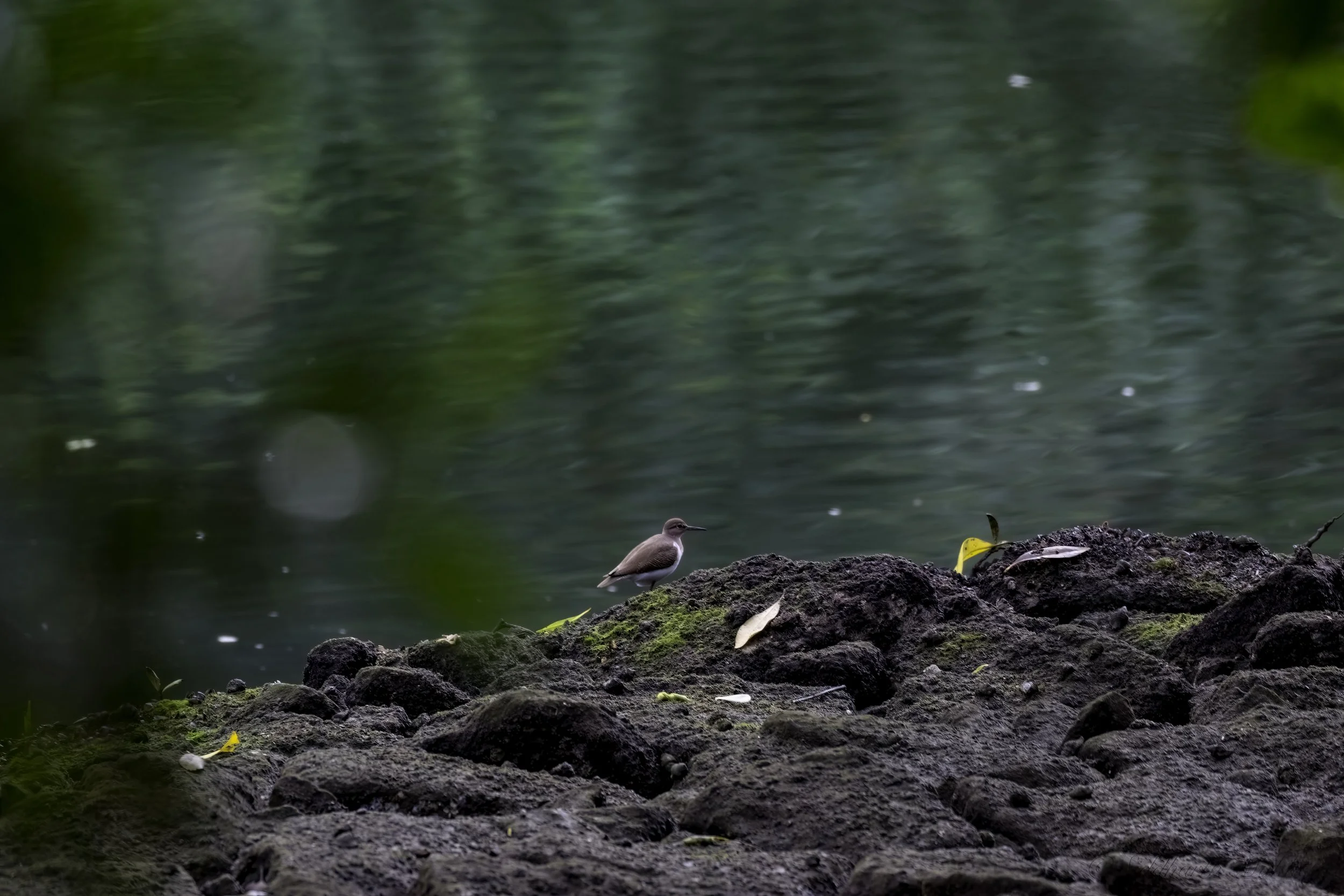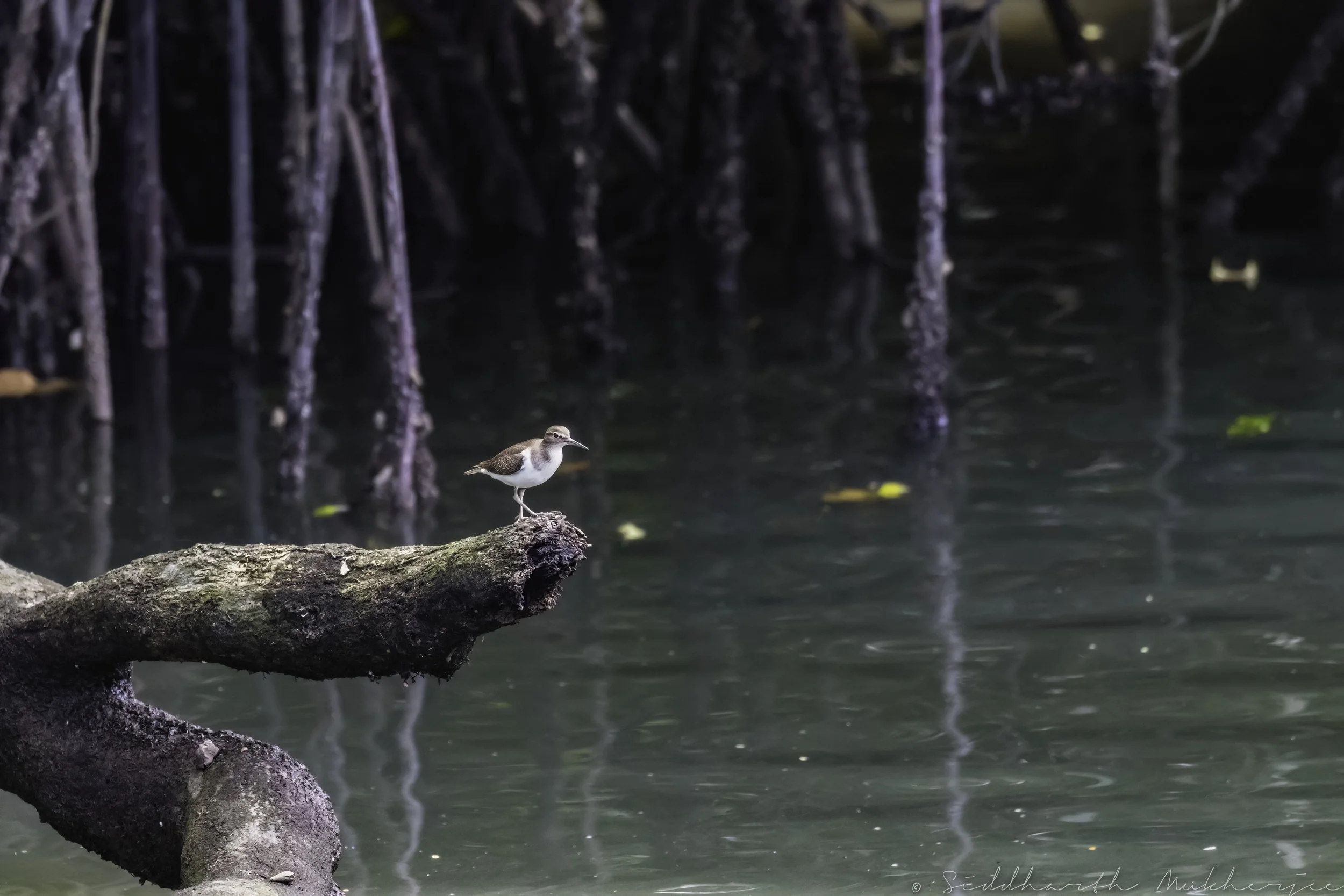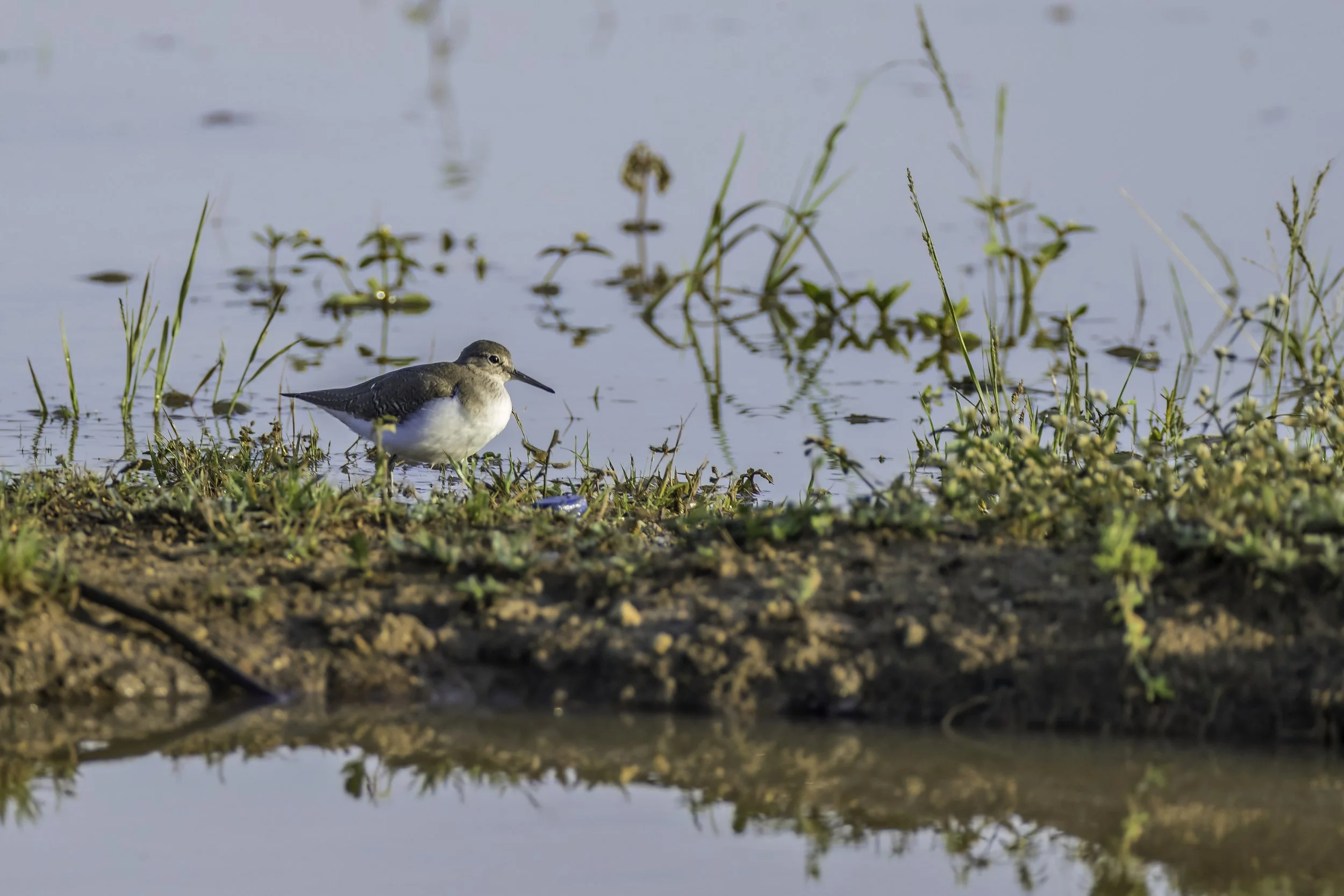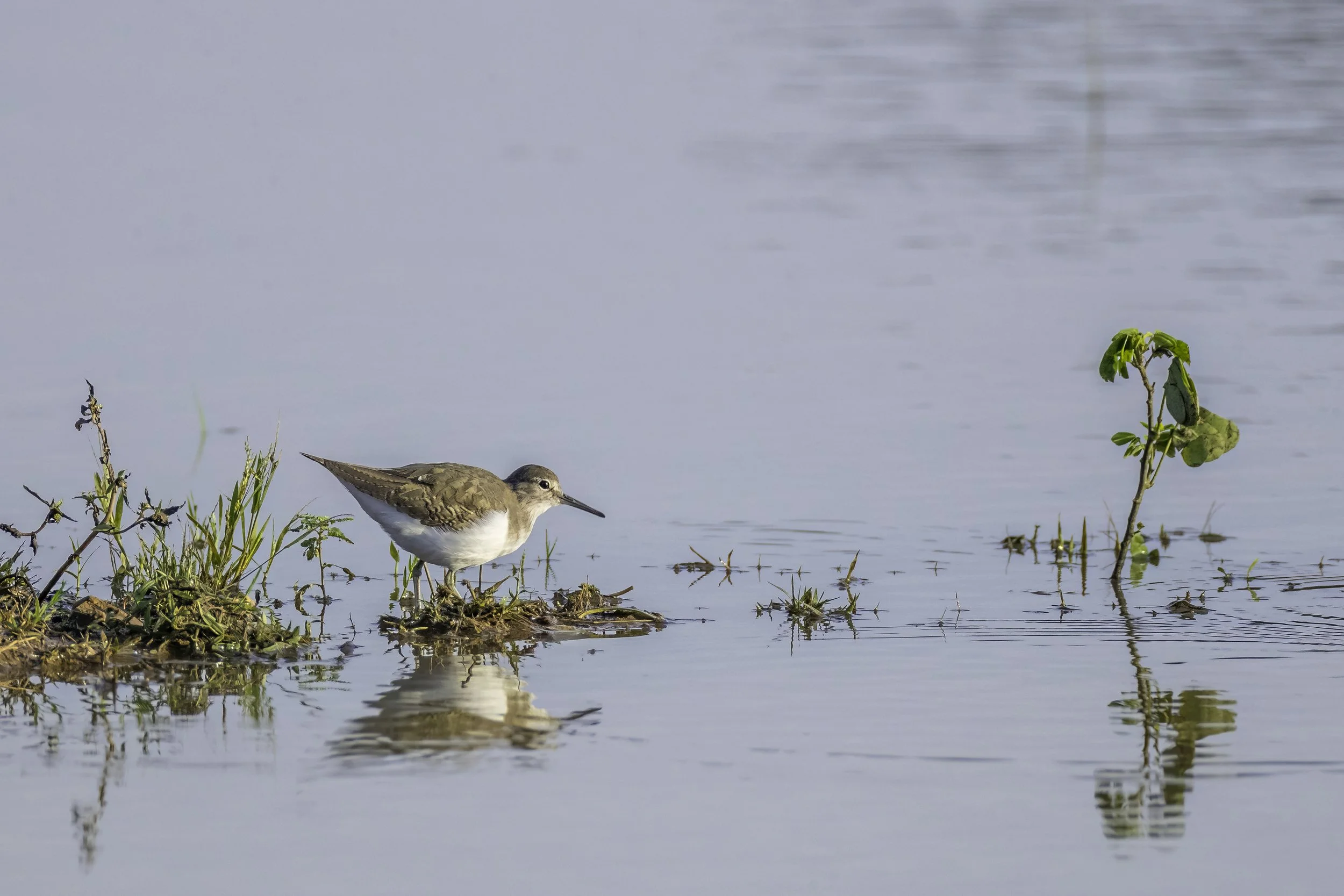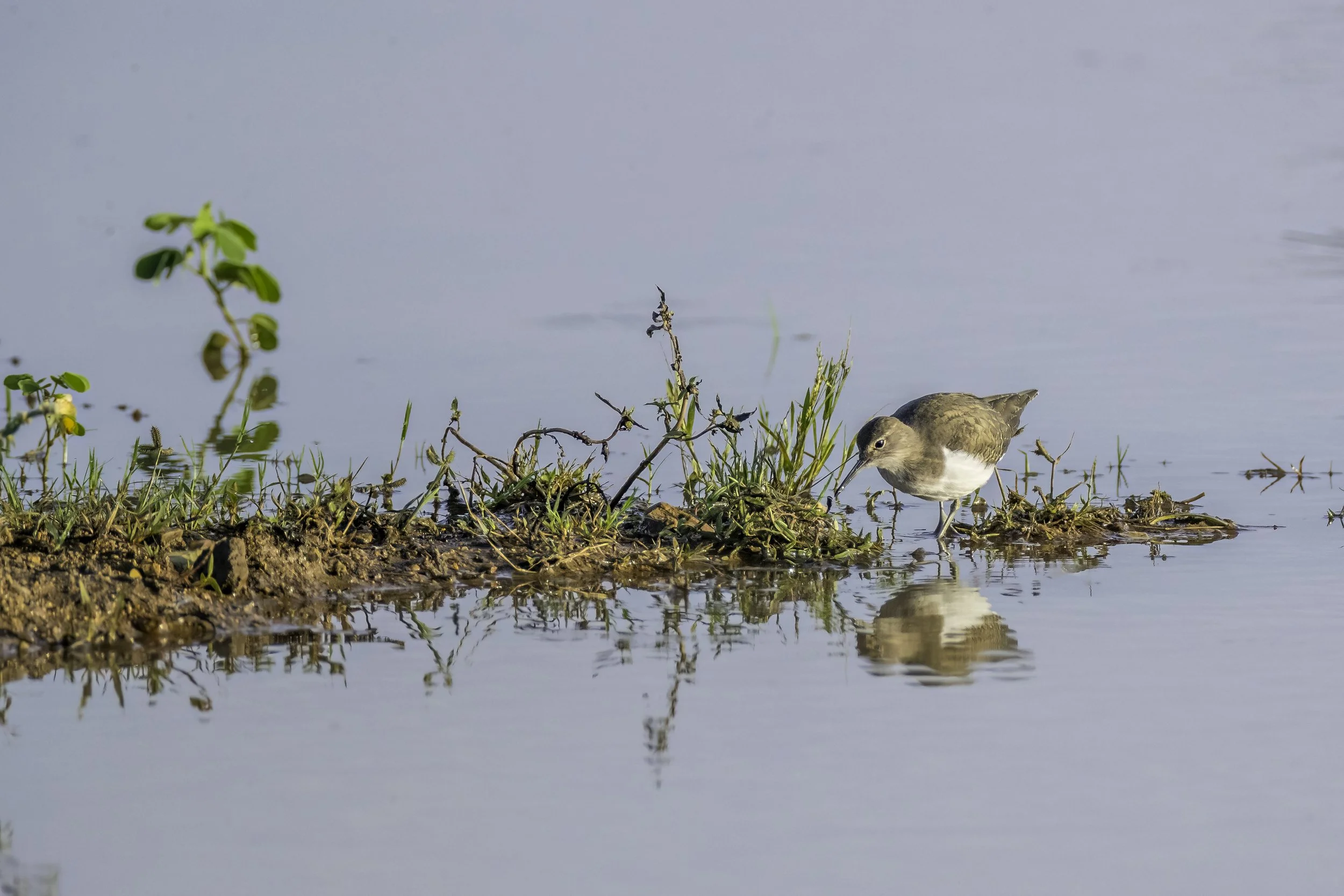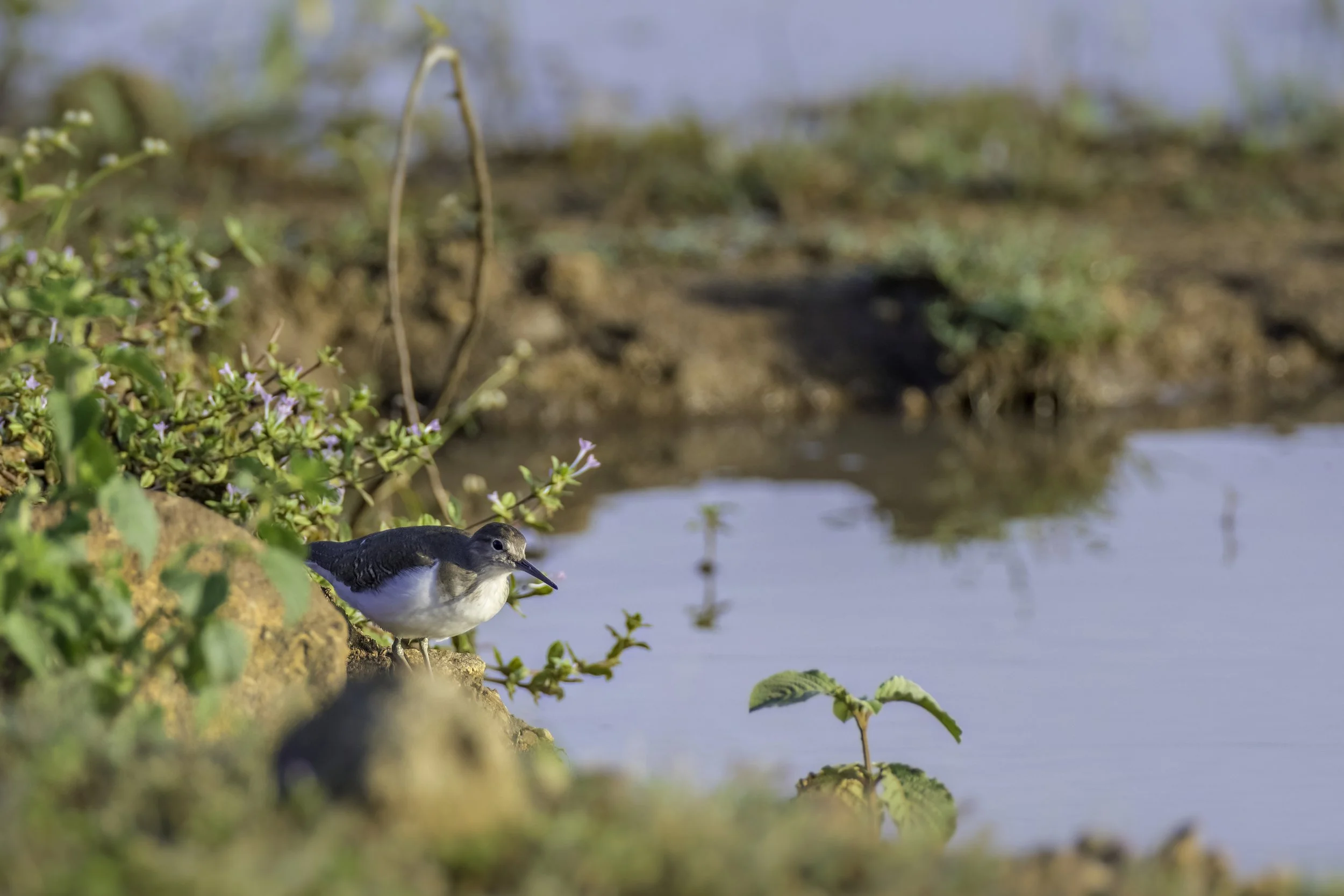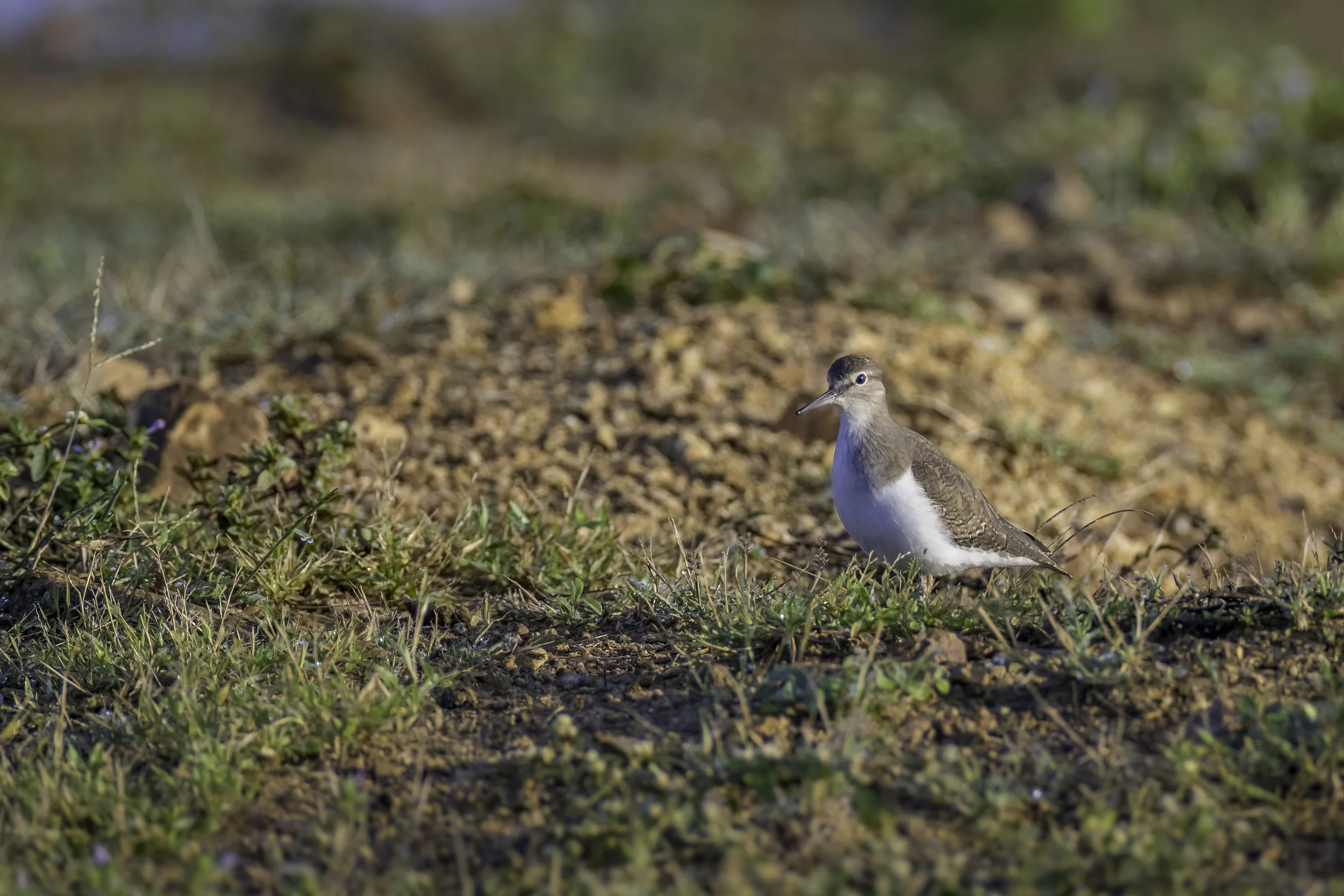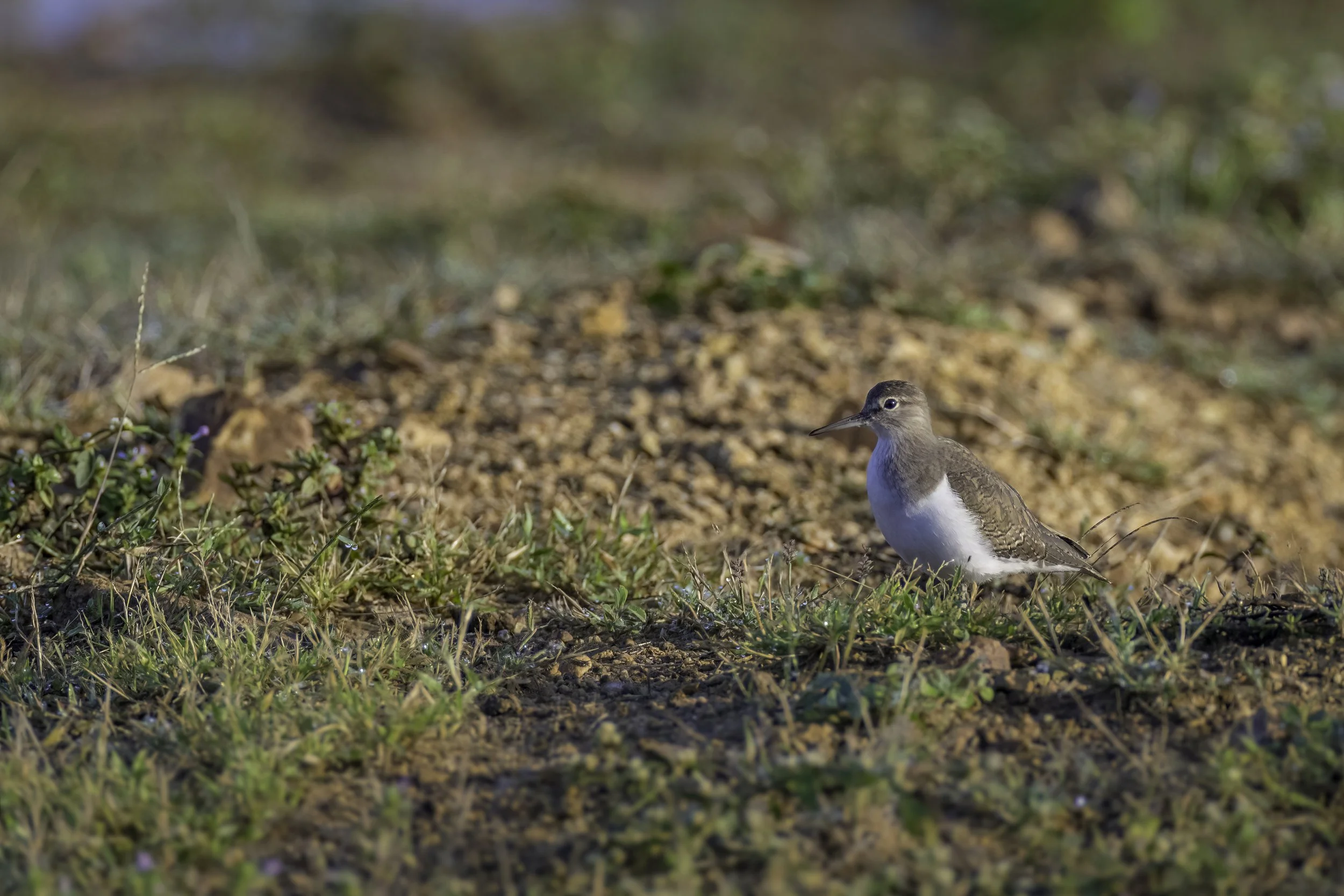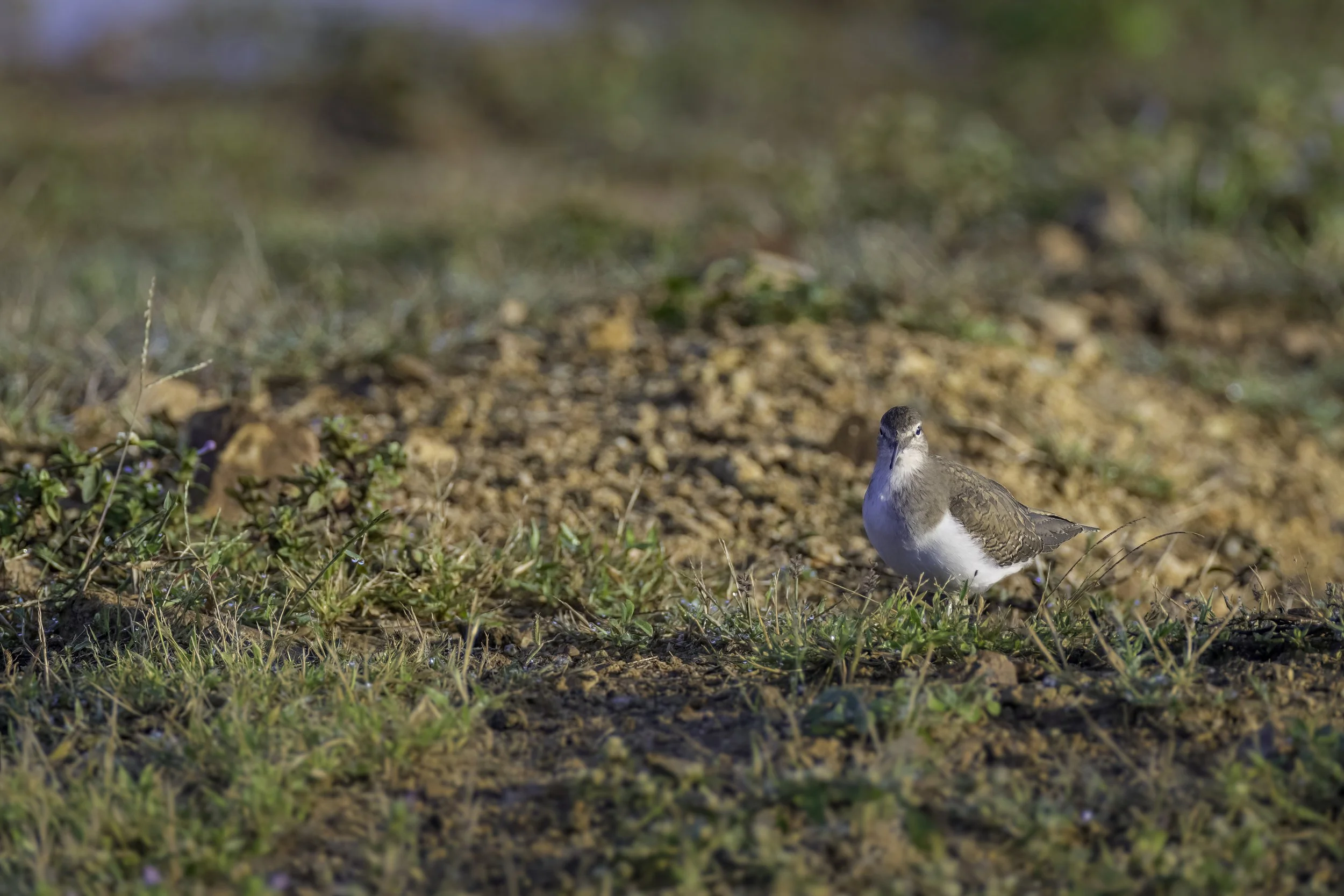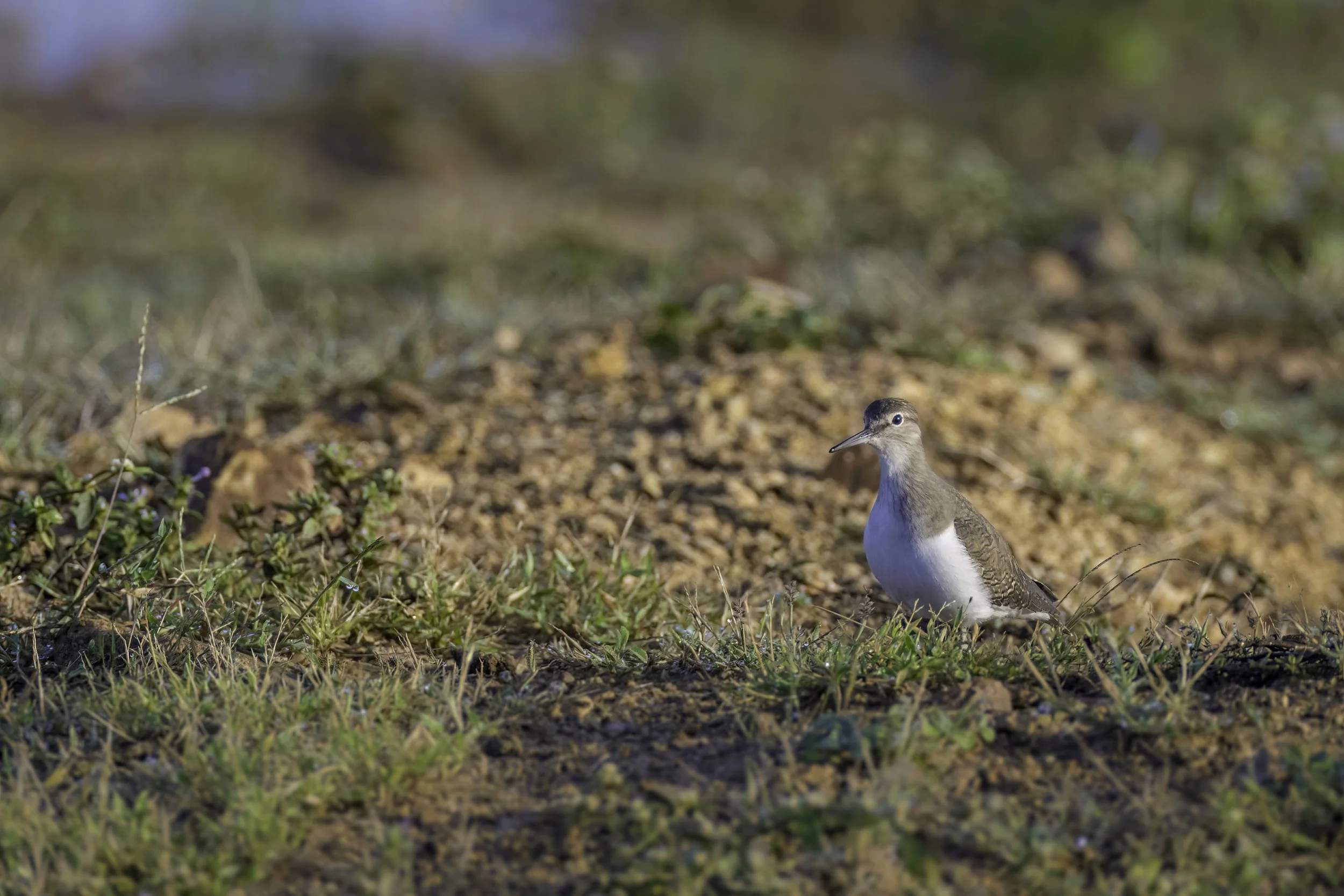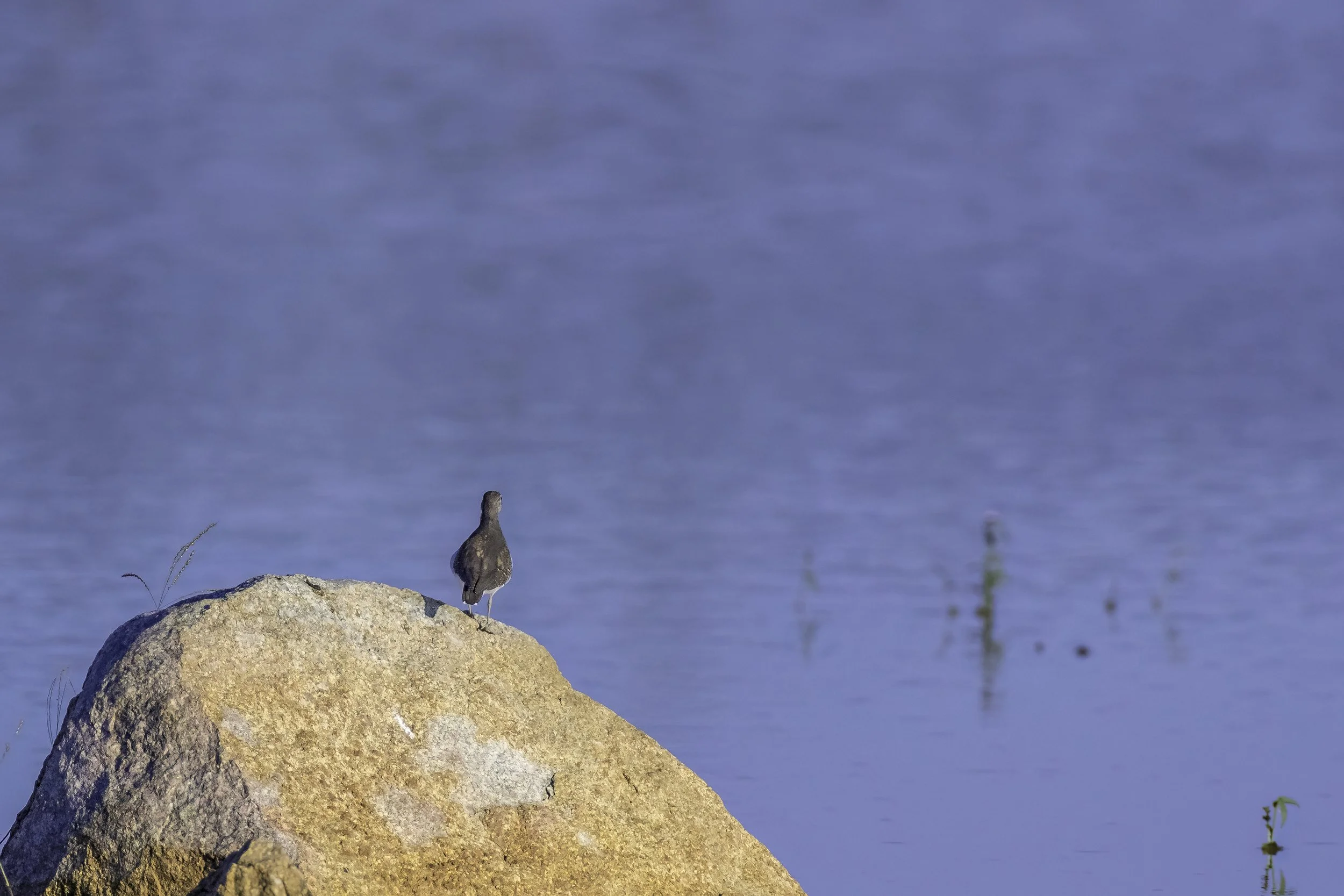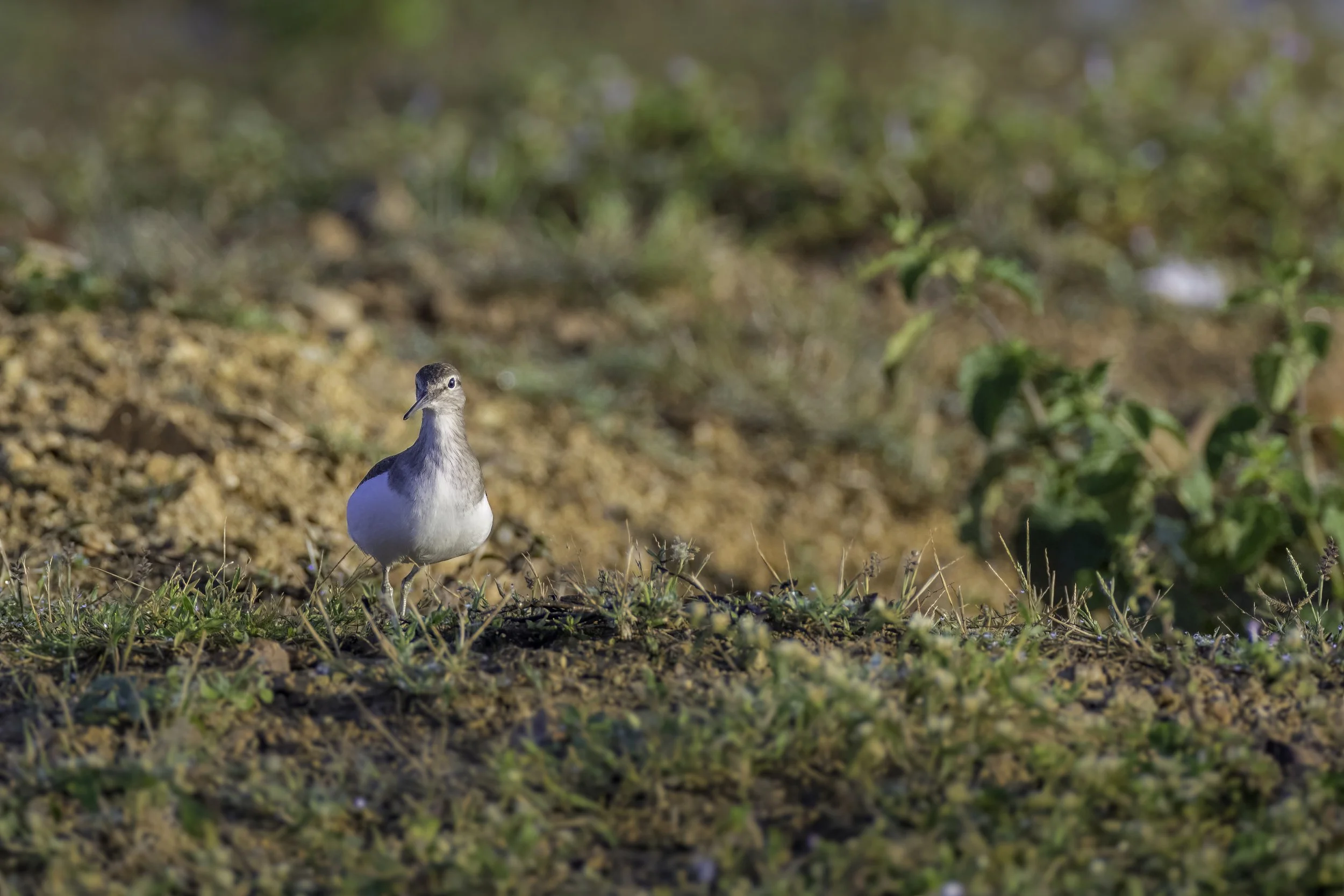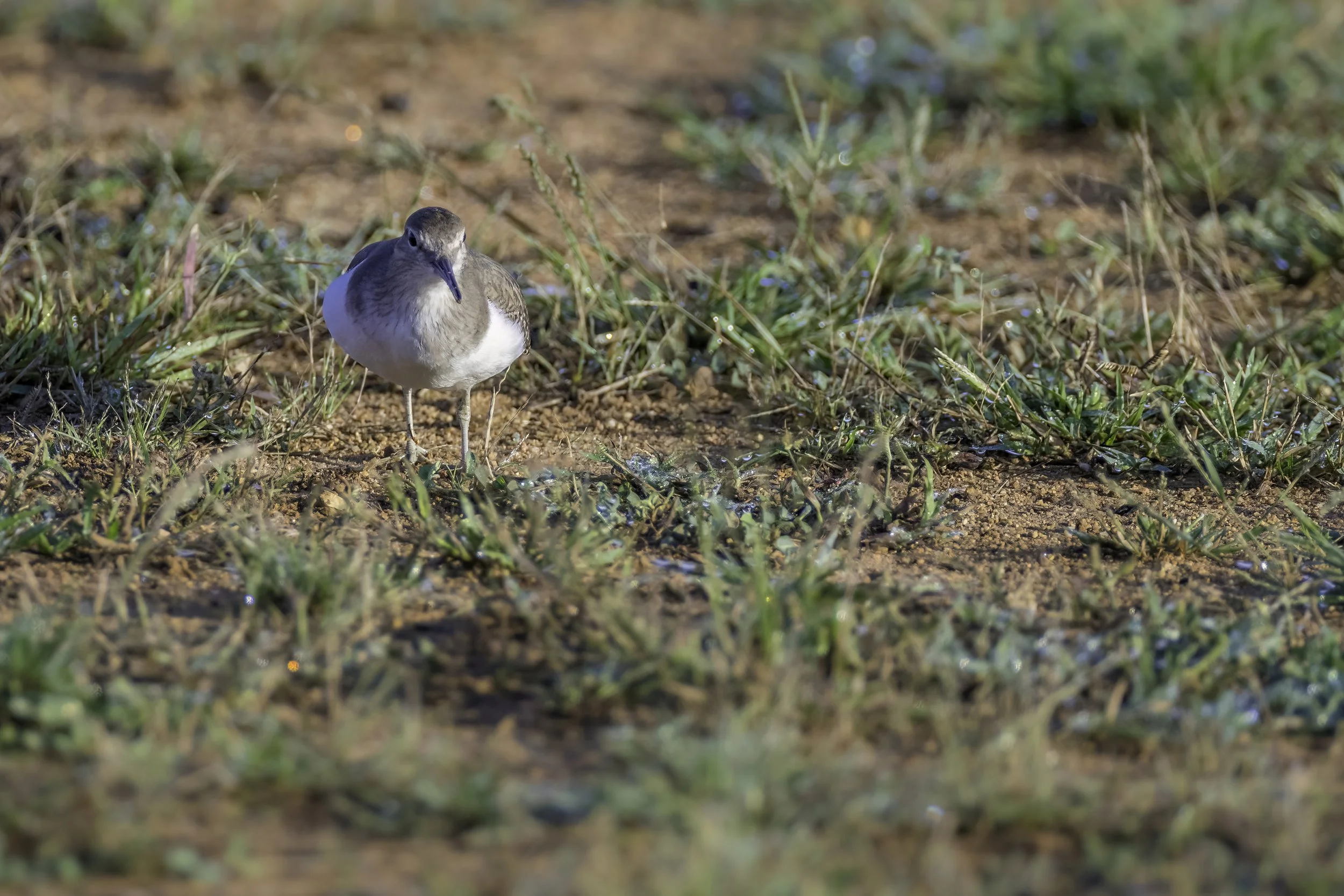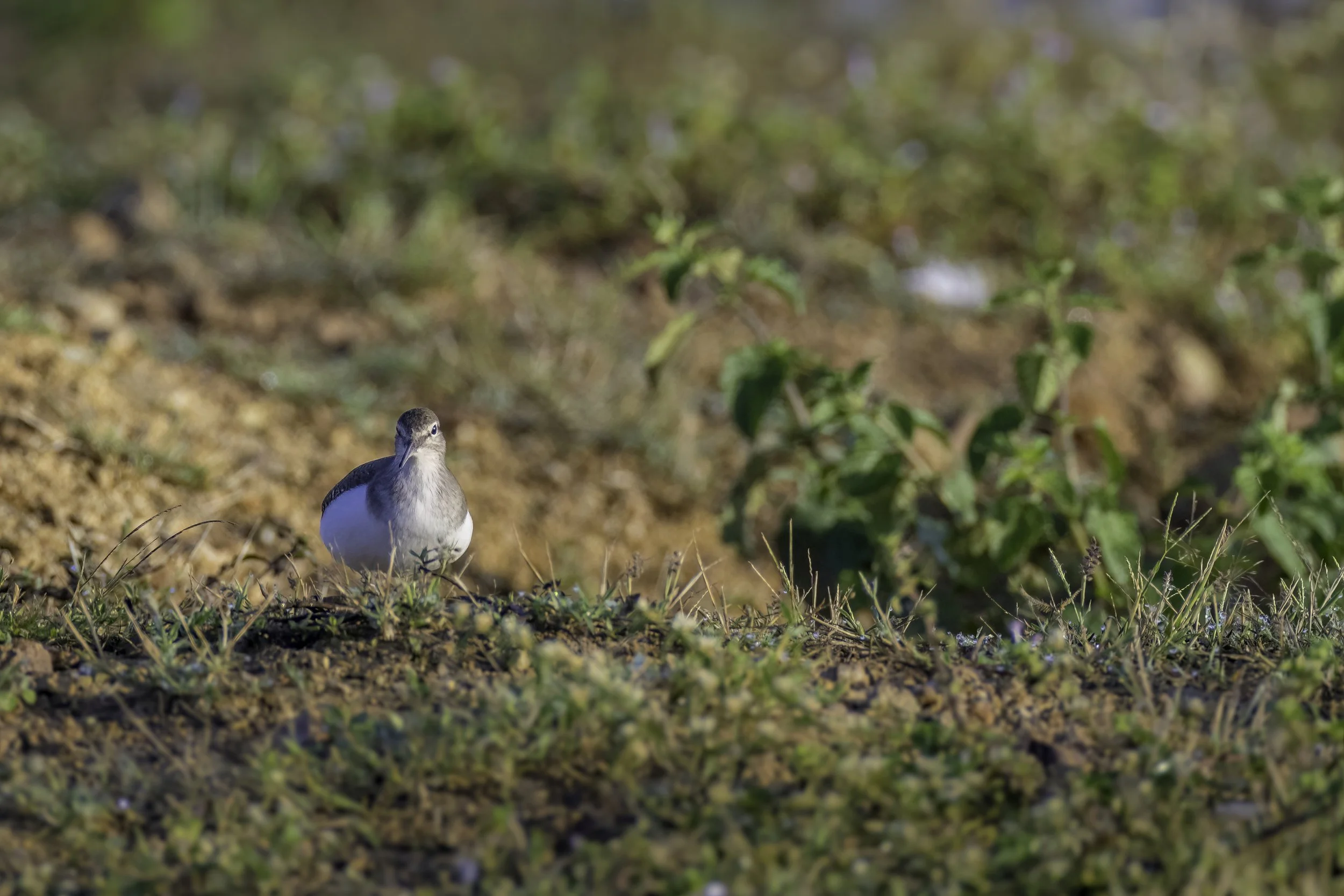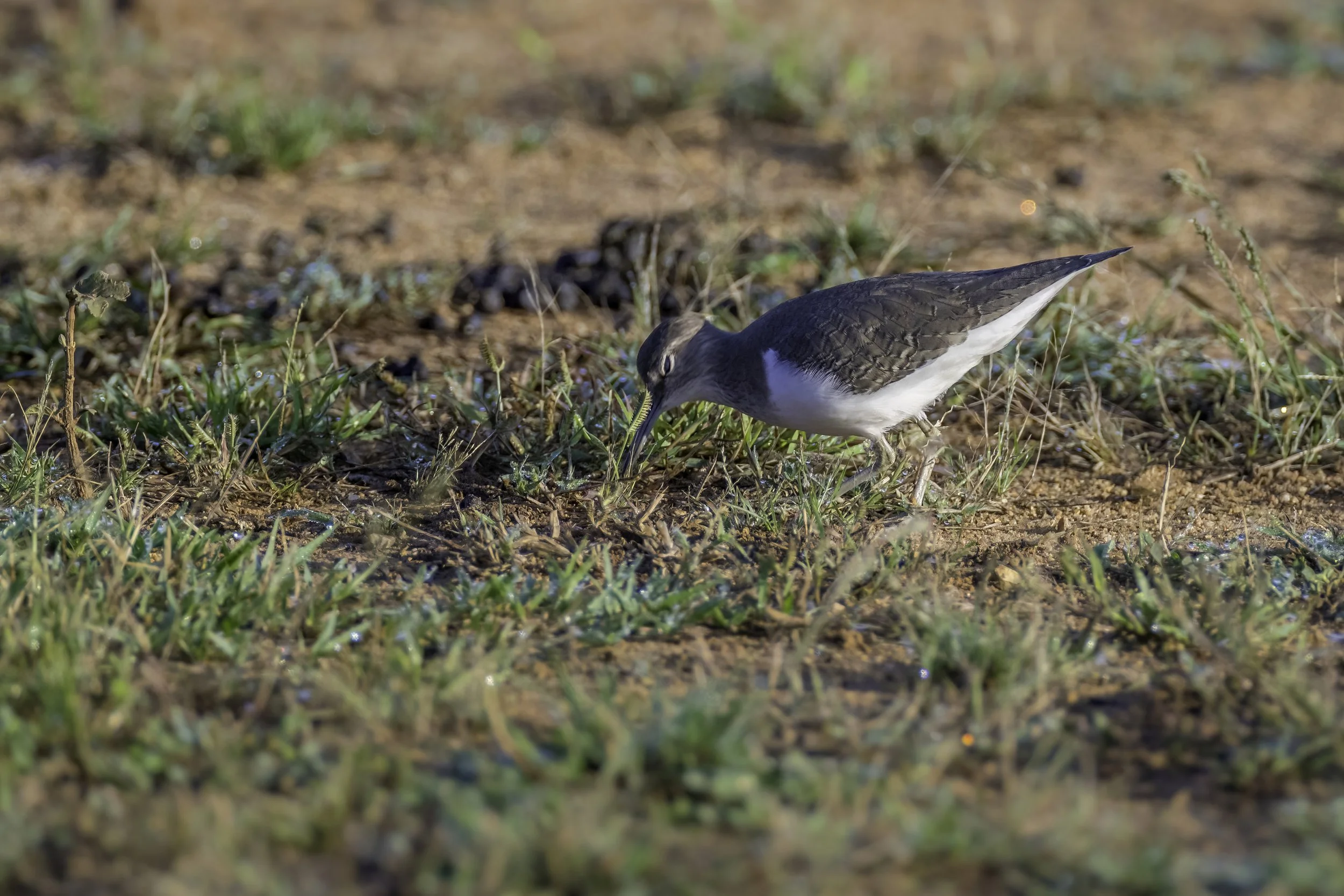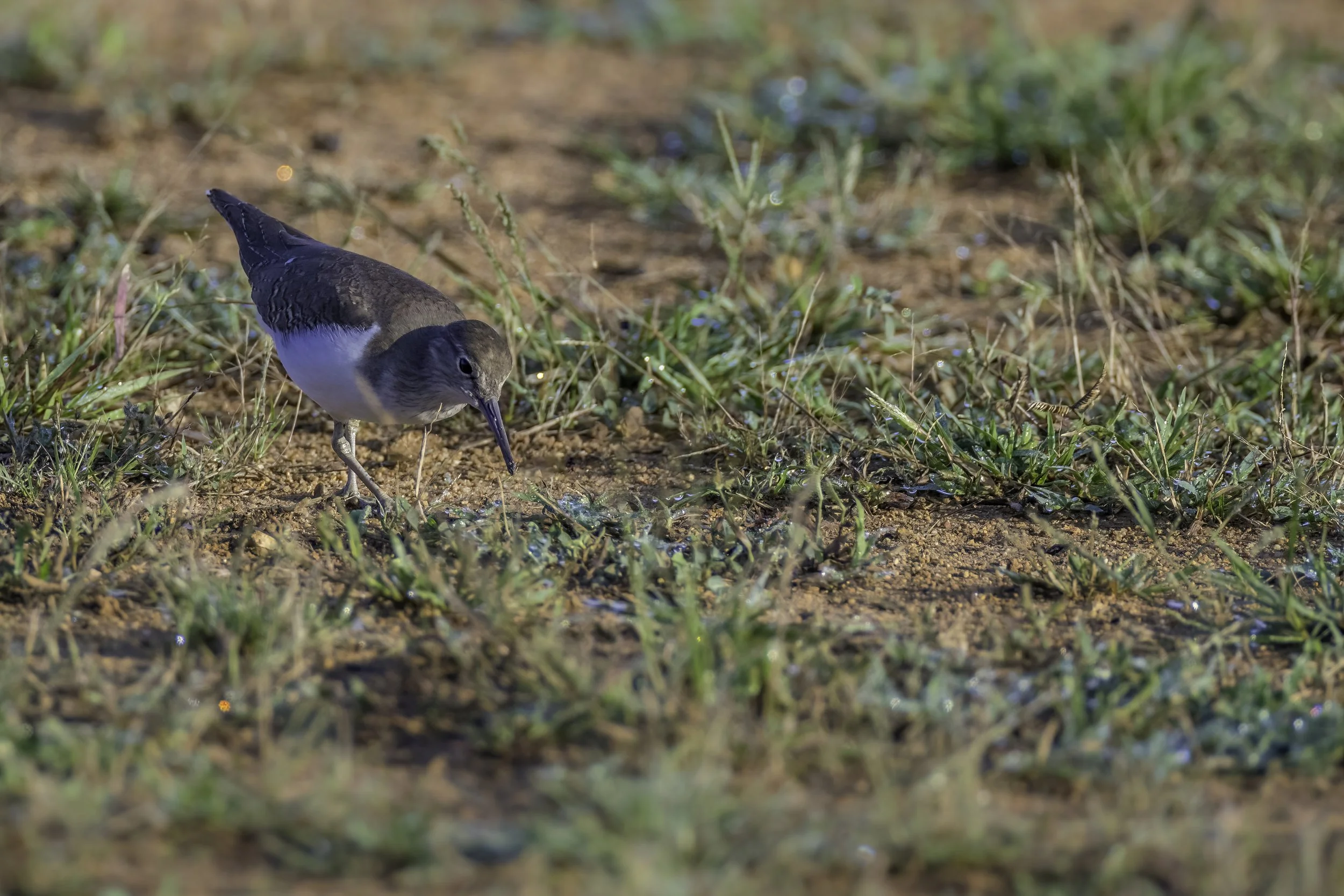Common Sandpiper
Actitis hypoleucos
Mokila, Telangana & Sungei Buloh Wetlands, Singapore
The Common Sandpiper (Actitis hypoleucos) is a small, energetic wader with a global reach, found across Europe, Asia, Africa, and Australasia. Known for its distinctive bobbing "teetering" motion and stiff-winged flight low over the water, this resilient bird is a familiar sight along a myriad of shorelines, from fast-moving upland rivers during the breeding season to coastal mudflats and mangrove estuaries in winter. This blog explores the life of this fascinating species, highlighting its presence as a migratory visitor in two vastly different yet vital wetland ecosystems: the inland water bodies of Mokila in Telangana, India, and the rich intertidal mudflats of the Sungei Buloh Wetland Reserve in Singapore.
Mokila, Telangana: An Inland Freshwater Haven
Mokila, a region in Telangana, India, offers a network of inland water bodies, ponds, and agricultural areas. Here, the Common Sandpiper is typically found along the edges of freshwater lakes and streams, or even in artificial habitats like irrigation ditches and sewage treatment areas. Common year-round residents include species like the Indian Peafowl, Black Drongo, Red-wattled Lapwing, White-throated Kingfisher, Spotted Owlet, and various babblers and munias. Water bodies attract resident waterbirds such as the Lesser Whistling Duck, Indian Spot-billed Duck, and Oriental Darter. Insectivores like bee-eaters and shrikes are also abundant.
During the winter months (October to March), Mokila becomes a crucial stopover and wintering ground for numerous migratory birds from the north - particularly palaearctic migrants. Winter visitors can include the Common Sandpiper, various ducks like the Common Pochard, Eurasian Teal and Northern Shoveler, as well as other waders like the Common Snipe and Black-tailed Godwit. Raptors like the Oriental Honey-buzzard and Bonelli's Eagle have also been spotted in the region. Situated near Hyderabad in the Telangana state of India, Mokila is an important, though often informal, birding area centered around local lakes, ponds, and agricultural lands. This mix of freshwater habitats and surrounding scrubland supports a rich diversity of both resident and migratory bird species throughout the year. Bird diversity includes a variety of species:
Waders and Waterbirds: Species like the Common Sandpiper, Common Teal, Northern Shoveler, Black-winged Stilt, and various egrets and herons are common.
Raptors: The area is known for sightings of raptors such as the Black Kite, Marsh Harrier, and occasionally the Greater Spotted Eagle.
Other notable species: Resident birds like the now Near Threatened Indian Roller (the state bird of Telangana), Painted Stork, Spot-billed Pelican, and various munias, warblers, and kingfishers can be found here consistently. The presence of these birds highlights the ecological significance of Mokila's wetlands.
Threats:
Despite its rich biodiversity, Mokila is facing significant threats, primarily driven by its proximity to the growing urban center of Hyderabad:
Urbanization & Real Estate Development leading to Habitat Loss and Fragmentation: The primary threat is rapid real estate development around the water bodies and surrounding lands, leading to habitat fragmentation and destruction. The most prominent threat is the conversion of natural habitats, such as wetlands, agricultural lands, and shrublands, into residential and commercial real estate. This leads to the loss and fragmentation of crucial feeding and nesting grounds.
Pollution & Anthropogenic Disturbances: Increased human activity brings pollution, including waste dumping and agricultural runoff, which degrades water quality and harms aquatic life, a key food source for the birds. This includes domestic pets (cats and dogs) and urban infrastructure like glass facades (which cause bird collisions), posing additional threats to the avian population. Now there is another factor added to this - the extensive use of LED lights at night creating extensive light pollution leading to behavioral changes in many bird species. Read more about Light Pollution.
Homogenization of Species: Urbanization tends to favour a few adaptable species (like Rock Pigeons and Common Mynas), leading to a decline in overall species diversity and the local extinction of more specialized or sensitive birds.
Encroachment: Land encroachment for construction is reducing the overall area available for birds to forage and roost.
Disturbance: Increased human foot traffic and noise pollution disturb sensitive species, particularly shy waterbirds and migratory visitors.
These pressures underscore the need for formal conservation efforts to protect Mokila's wetlands as a vital habitat for regional bird populations.
In this environment, the sandpiper utilizes the muddy edges and available vegetation for cover while foraging for terrestrial and aquatic insects, worms, and possibly small amphibians. The photographic opportunities in Mokila would likely capture the bird against a backdrop of rich, often green, inland vegetation and calm waters, contrasting with the more open, coastal scenes of Singapore. The challenge for a photographer here might be capturing the bird among denser reedy areas, where its natural camouflage makes it difficult to spot before its shrill "swee-wee-wee" call gives it away as it flies off.
Sungei Buloh Wetland Reserve, Singapore: The Tidal Interface
Sungei Buloh Wetland Reserve (SBWR), located in the northwest of Singapore, is a globally significant, 202-hectare nature reserve and the country's first ASEAN Heritage Park. It is a critical link in the East Asian-Australasian Flyway, a major migration route for shorebirds and waterbirds. The reserve is known for its diverse habitats, including mangroves, mudflats, ponds, and secondary forests. Sungei Buloh hosts an impressive diversity, with over half of the 200 recorded bird species being migratory.
From September to March, the reserve is a bustling hub for waders and shorebirds escaping the northern winter. Key species include the Whimbrel, Common Greenshank, Common Redshank, Pacific Golden Plover, and this Common Sandpiper. The rare Asian Dowitcher and the endangered Spoon-billed Sandpiper are also occasional visitors, attracting avid birdwatchers. Resident Birds: Year-round residents include a variety of herons and egrets (like the Gray Heron), kingfishers (Collared and White-throated), sunbirds, and the Oriental Pied Hornbill. The reserve's rich ecosystem provides abundant food sources for these non-migratory species as well.
Bird Diversity
Migratory Birds: During the migratory season (September to March), the reserve comes alive with thousands of shorebirds. Key species include the Sundeavan Snipe, Common Greenshank, Marsh Sandpiper, Curlew Sandpiper, Whimbrel, Eurasian Curlew, and the globally threatened Asian Dowitcher and Great Knot - which incidentally I have photographed at the Bhairavapalem Mudflats. The reserve is particularly important for its wader populations.
Resident Birds: Year-round residents include a variety of species such as the Little Heron, Gray Heron, White-throated Kingfisher, Collared Kingfisher, Changeable Hawk-eagle, and the elusive Mangrove Blue Flycatcher. The vibrant Stork-billed Kingfisher and the Common Flameback Woodpecker are also common sights.
Threats
Despite its protected status, Sungei Buloh faces threats due to its location within highly urbanized Singapore and broader environmental changes.
Coastal Development: While protected from direct encroachment within the reserve, surrounding industrial and urban development on adjacent land can impact the reserve's buffer zones and water quality through pollution runoff. The surrounding development and the general pressures of a highly urbanized island nation pose risks to the wider ecosystem that the birds rely on during migration.
Climate Change and Sea Level Rise: The primary long-term threat is climate change, particularly rising sea levels. The reserve's low-lying coastal habitats, such as the intertidal mudflats and mangroves, are vulnerable to inundation and erosion, which could drastically alter the ecosystem and reduce foraging areas for shorebirds.
Pollution and Water Quality Degradation: Pollution from the nearby Johor Strait and surrounding industrial areas can impact the delicate balance of the mangrove ecosystem and the marine invertebrates that the birds feed upon.
Habitat Degradation along Flyway: A major threat is not just to the reserve itself, but the general degradation and loss of other essential wetland habitats along the East Asian-Australasian Flyway, making Sungei Buloh's role as a safe haven even more critical.
Anthropogenic Disturbance: High visitor numbers, while managed through a network of boardwalks and hides, can still cause disturbance to sensitive bird species, particularly if visitors do not follow guidelines or venture off marked paths.
Ongoing conservation and monitoring efforts are crucial for mitigating these threats and ensuring the long-term viability of the reserve as a haven for both resident and migratory birds.
In this internationally significant wetland Reserve, the sandpiper's habitat is dominated by mangroves, intertidal mudflats, and tidal creeks. During low tide, vast mudflats are exposed, providing a rich larder of marine invertebrates. The Common Sandpiper can be photographed alongside a wide variety of other migratory waders like Whimbrels and Common Greenshanks, though it typically forages alone or in small, single-species groups. The environment is a dynamic mix of saline and fresh water, and the sandpiper adapts its diet to the abundant crustaceans and polychaete worms found in the mud. Photography here benefits from strategically placed bird-watching hides and boardwalks, offering unique angles of the bird's active, pecking foraging style in the exposed mudflats or along rocky shores.
Common Sandpiper - The Little Bird with the 'Bob'
The Common Sandpiper is a small, somewhat long-bodied bird, typically measuring 18-20 cm in length with a wingspan of 32-35 cm. It weighs a mere 40-60 grams, yet is built for impressive, long-distance migration. Its plumage provides excellent camouflage in its varied habitats. The upper parts are a greyish-brown, which contrasts sharply with its bright white underparts, a white spur extending up between the wing and the dark breast patches. It features an indistinct white eye-ring and a short, straight, dark bill with a pale base. Its legs are a short, dark-yellowish color, which helps distinguish it from its American relative, the Spotted Sandpiper (Actitis macularia). In flight, the bird reveals a dark rump and conspicuous white wing-bars, a key identification feature for birdwatchers.
One of its most endearing and consistent traits, observed whether it is foraging in the calm waters of an Indian pond or the tidal creeks of Singapore, is its constant head and tail bobbing, which has earned it the nickname "Bob" in some areas. This "teetering" behavior is thought to help the bird maintain balance on slippery surfaces or perhaps serves as a form of communication or anti-predator defense.
The Common Sandpiper is a highly migratory species with an extensive Palearctic breeding range that spans most of temperate and subtropical Europe and Asia. As the northern hemisphere winter approaches, these birds undertake remarkable journeys south to warmer climes in Africa, southern Asia (including India and Singapore), and Australia.
Migration usually occurs singly or in small groups, with adults typically moving along the coast while juveniles may travel more inland. They are known to migrate at night and are capable of single, non-stop flights of up to 4000 km. The timing of their migration is generally from mid-July to August for the southward journey and late March to April for the return north.
The common sandpiper demonstrates remarkable adaptability, thriving in both the freshwater and saline environments offered by Mokila and Sungei Buloh, respectively. Their fidelity to specific stopover and wintering sites is high, meaning a bird spotted at Mokila this year might very well return to the same location the next.
The Common Sandpiper is a diurnal forager, locating its prey primarily by sight and by feel using sensitive receptors in its bill tip. Its diet is diverse, including adult and larval insects (beetles, flies), spiders, mollusks, and crustaceans. On occasion, it has been known to take small fish or tadpoles and even scavenge scraps.
Its foraging method involves a quick run-and-pause technique, often picking items from the surface or probing in shallow water and mud. It is an active bird, and it has even been known to swim underwater in pursuit of prey.
Socially, outside of the breeding season and large migratory roosts, the common sandpiper is a solitary bird, often defending a small feeding territory from others of its species.
Breeding takes place in the Northern Hemisphere during May and June. The nest is typically a shallow scrape on the ground, often hidden in thick vegetation along riverbanks or lake shores. Both parents share incubation duties for about three weeks, but the female often leaves before the young fledge, leaving the male to tend to the chicks until they are independent.
The Common Sandpiper is currently classified as a species of Least Concern by the IUCN due to its extremely large range and population size. However, like many migratory birds, it faces threats from habitat loss and degradation, especially in vital coastal and wetland areas that are impacted by human development and climate change. Conservation efforts, such as the protection of reserves like Sungei Buloh, are crucial for ensuring the survival of this adaptable and widespread species.
The Common Sandpiper, with its nervous energy and global journeys between places as distant and different as the inland waters of Mokila and the coastal mangroves of Sungei Buloh, is a true testament to the remarkable lives of migratory birds and the critical importance of preserving the wetlands they rely upon.
‡‡‡‡‡
Related Posts

